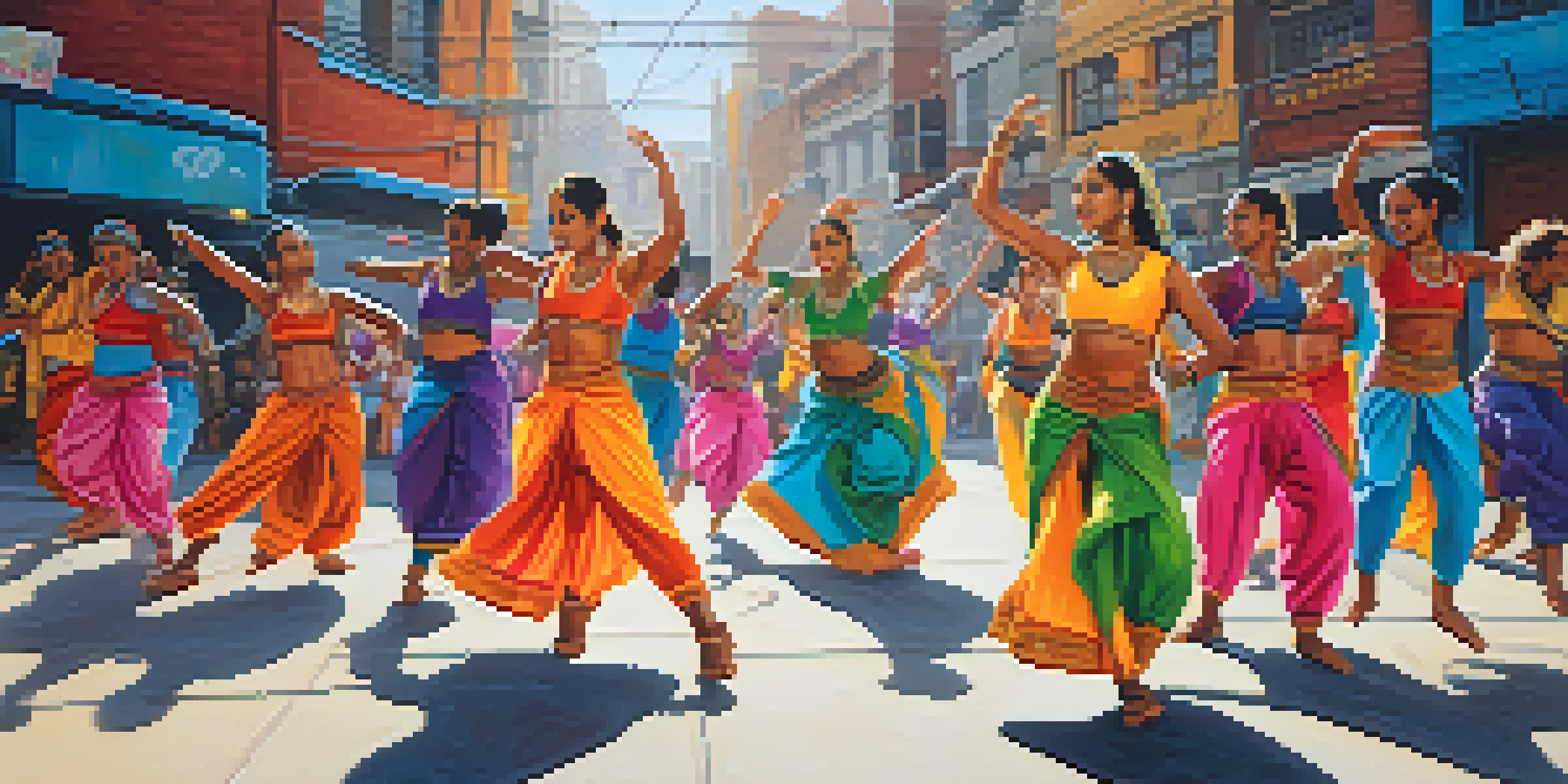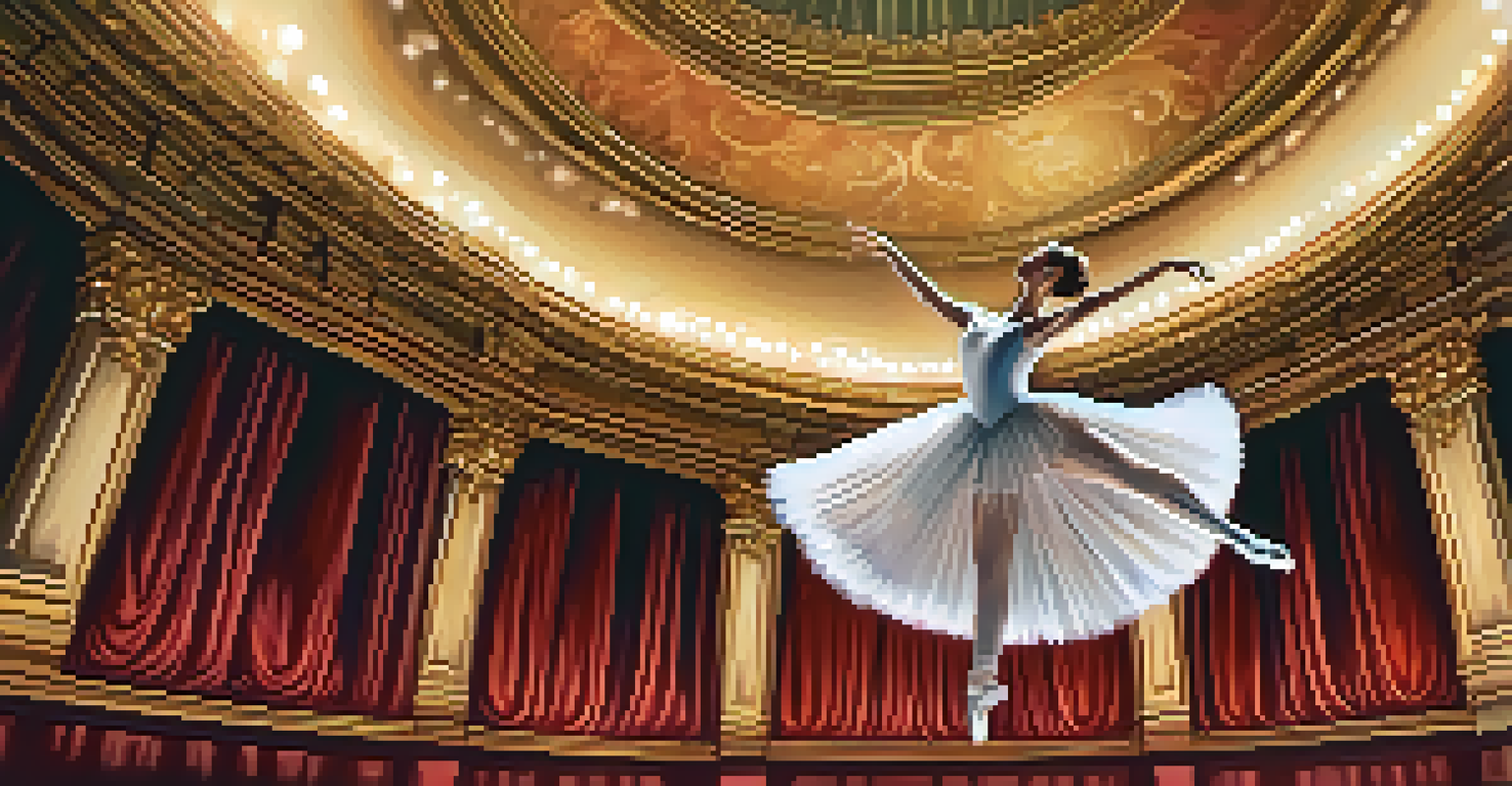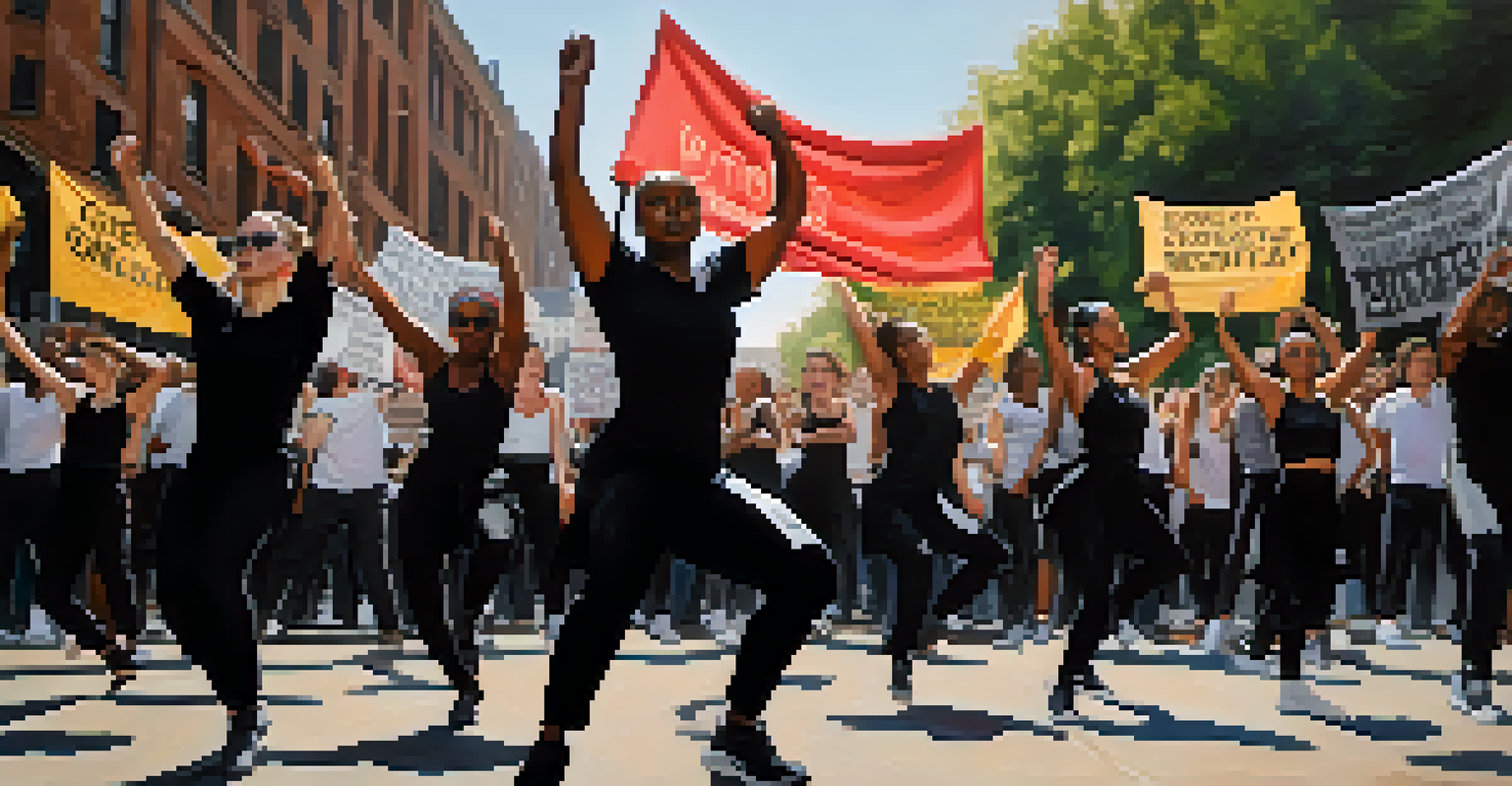Dance as a Reflection of Societal Changes Across Generations

The Roots of Dance: A Cultural Expression
Dance has always been a vital part of human culture, embodying social norms and traditions. From tribal rituals to royal courts, dance serves as a medium to express community identity and shared values. As societies evolve, so too does their dance, often showcasing the unique experiences and struggles of each era.
Dance is the hidden language of the soul.
For instance, the traditional folk dances of the past often reflected agricultural cycles and communal harmony. In contrast, modern dance forms might mirror urban life, highlighting themes like individualism and social issues. This transformation illustrates how dance can serve as a historical record, capturing the essence of a society at a specific moment.
Ultimately, dance acts as a cultural lens, allowing us to see how societies view themselves and their place in the world. It is through this evolving art form that we can better understand the complexities of human experience across generations.
The Influence of Historical Events on Dance Styles
Significant historical events have shaped the evolution of dance, acting as catalysts for new styles and expressions. For example, the Harlem Renaissance in the 1920s gave birth to jazz dance, which celebrated African American culture and creativity amidst a backdrop of racial tension. This period not only enriched the American dance scene but also served as a powerful statement of resilience.

Similarly, the impact of war often leads to a transformation in dance styles. The emergence of the tango in Argentina is closely tied to the social upheaval and migration patterns of the early 20th century. These dance forms not only reflect the circumstances of their time but also provide an emotional outlet for communities facing challenges.
Dance Reflects Cultural Evolution
Dance serves as a vital cultural expression, embodying societal norms and historical changes across generations.
Thus, dance becomes a form of storytelling, encapsulating the triumphs and tribulations of society. By understanding the historical context of various dance styles, we can appreciate how they resonate with the human experience and reflect the societal changes they emerge from.
Dance as a Reflection of Gender Roles
Throughout history, dance has mirrored evolving gender roles, often highlighting societal expectations and norms. In many traditional dances, gender roles are distinctly defined, with men and women taking on specific movements that reflect their societal positions. However, as gender roles have evolved, so too has the choreography and expression found in dance.
Dance is the joy of movement and the heart of life.
Take ballet, for example. Originally, it reinforced traditional gender roles, with women often portrayed as delicate and ornamental. Yet, modern ballet has begun to challenge these stereotypes, showcasing female dancers in powerful and assertive roles. This shift not only enriches the art form but also speaks to the ongoing conversation about gender equality in society.
As dance continues to evolve, it provides a platform for the exploration of gender identity and expression. By breaking down traditional barriers, dance allows for a more inclusive representation of all individuals, reflecting the diverse experiences of modern society.
The Role of Technology in Shaping Dance Trends
In the digital age, technology has profoundly impacted how dance is created, shared, and consumed. Social media platforms have allowed dancers to showcase their talents to a global audience, giving rise to viral dance trends that can spread like wildfire. This phenomenon illustrates how technology not only influences dance styles but also democratizes the art form.
For example, the rise of TikTok has birthed numerous dance challenges that encourage creativity and participation from all walks of life. These short-form dances often reflect current cultural trends, allowing individuals to engage with and reinterpret existing dance styles. This interplay between technology and dance emphasizes the importance of community and shared experiences in shaping contemporary culture.
Historical Events Shape Dance Styles
Significant historical events catalyze the evolution of dance, transforming styles and expressions that reflect social realities.
Moreover, technology has facilitated collaboration across borders, leading to a fusion of styles that enriches the dance landscape. As we navigate this ever-evolving digital world, it's crucial to recognize how technology continues to shape our understanding and appreciation of dance.
Dance as a Form of Social Protest
Dance has long served as a powerful tool for social protest, allowing individuals to express dissent and advocate for change. Throughout history, choreographers and dancers have used their art to comment on political and social issues, turning dance into a platform for activism. From the civil rights movement to contemporary social justice initiatives, dance has played a vital role in amplifying voices.
Consider the impact of the dance piece 'The Black Project' by choreographer Ayo Walker, which addresses systemic racism and police brutality. This kind of work not only raises awareness but also fosters a sense of solidarity among those who share similar struggles. By using dance as a medium of expression, artists can challenge the status quo and inspire others to join their cause.
As we reflect on the role of dance in social movements, it becomes evident that this art form transcends mere entertainment. It serves as a rallying cry, inviting audiences to engage with critical issues and consider their own positions within society.
The Globalization of Dance: A Cultural Melting Pot
The globalization of dance has created a rich tapestry of cultural exchange, blending traditions and styles from around the world. This phenomenon allows dancers to explore diverse influences, leading to innovative choreography that breaks down cultural barriers. As a result, dance has become a melting pot of ideas, reflecting the interconnectedness of our global society.
For instance, the fusion of hip-hop and traditional Indian dance forms has given rise to Bollywood hip-hop, captivating audiences and dancers alike. This blending of styles not only honors cultural heritage but also showcases the creativity that arises from collaboration. Such examples illustrate how dance can serve as a bridge between cultures, fostering understanding and appreciation.
Technology Transforms Dance Trends
The digital age has revolutionized dance creation and sharing, leading to viral trends and global collaboration among dancers.
As we embrace this globalization of dance, we must recognize the importance of respecting and honoring the origins of various styles. By doing so, we celebrate the diversity of human expression while acknowledging the shared experiences that unite us all.
Looking Ahead: The Future of Dance in Society
As we look to the future, the evolution of dance will undoubtedly continue to reflect societal changes and challenges. Emerging styles and trends will likely be shaped by ongoing conversations around identity, inclusivity, and technological advancements. The adaptability of dance ensures that it remains a relevant and dynamic art form.
Moreover, the rise of virtual reality and immersive experiences will likely influence how audiences engage with dance. This shift could open up new avenues for creativity, allowing artists to explore uncharted territories in choreography and performance. As we navigate these changes, the essence of dance as a means of expression and connection will remain at the forefront.

Ultimately, dance will continue to be a powerful reflection of the world around us, capturing the hopes, dreams, and struggles of future generations. As we embrace the journey ahead, we can look forward to a vibrant dance landscape that inspires and connects us all.